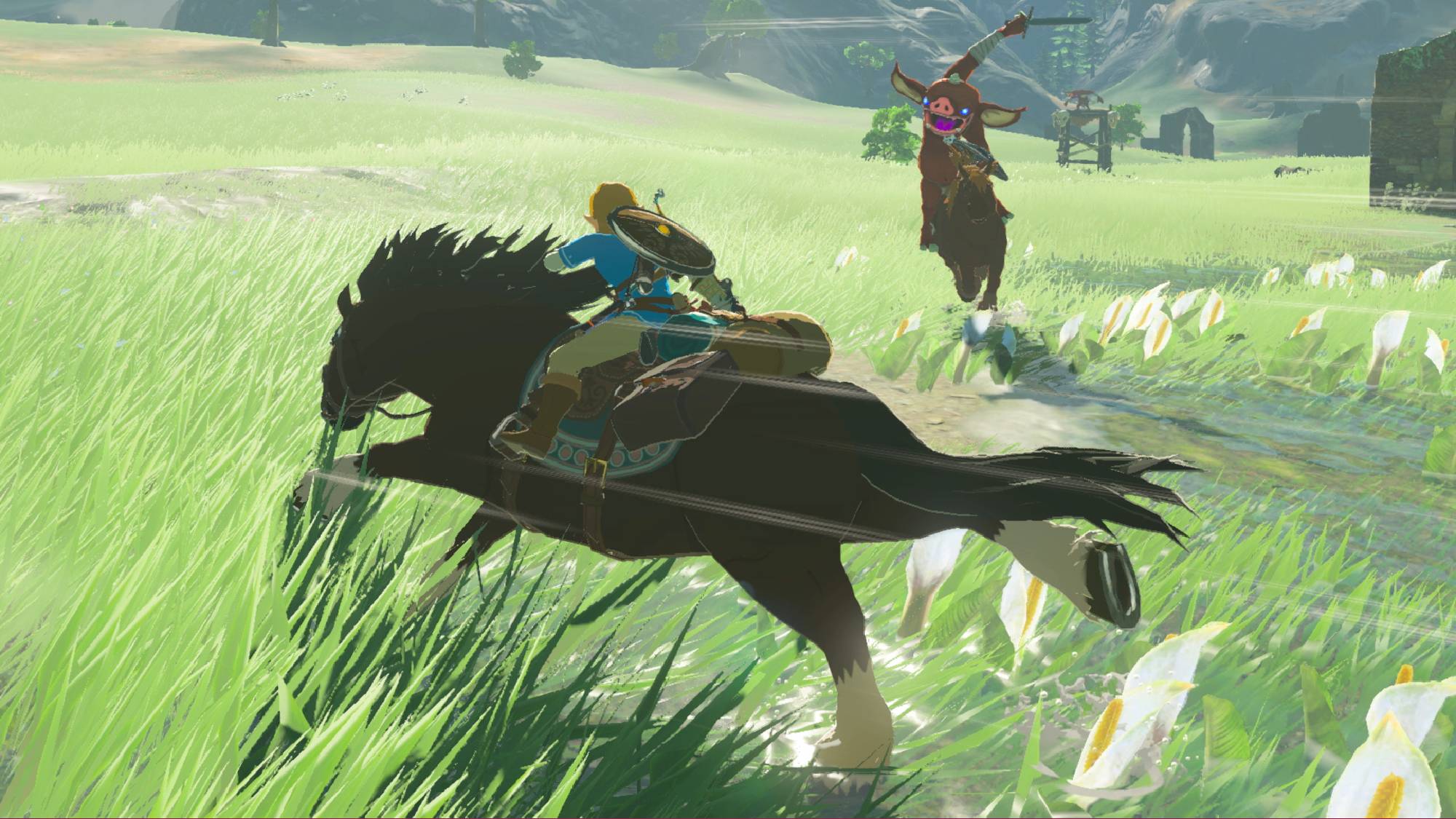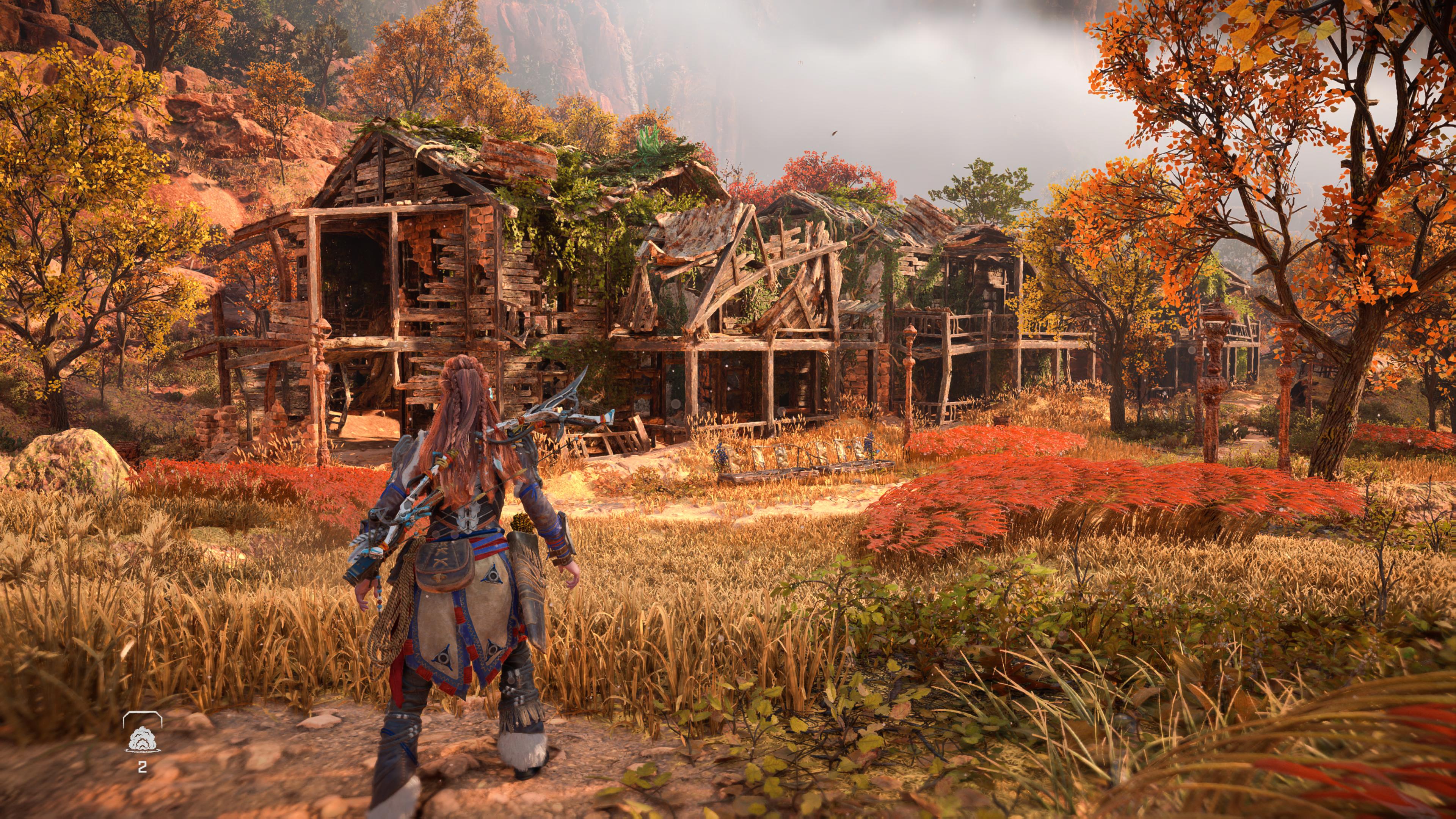Horizon Forbidden West is the next-gen Breath of the Wild I’ve been waiting for

For the past five years I’ve been desperate for an open-world game to captivate me in the same way that 2017’s The Legend of Zelda: Breath of the Wild did. Over the last half a decade many have tried, but none have quite managed to scratch the same itch. That was until I started playing Horizon Forbidden West last weekend.
At its core, Breath of the Wild was a proper adventure. The feeling of stepping into the lush open world of Hyrule and running off in any direction to see what you could find was liberating. And if you play Horizon Forbidden West in its Explorer Mode, you’ll quickly find the PS5 exclusive taps into that same sense of rewarding exploration.
On the surface, Explorer Mode may not appear to make any significant changes. The in-game description notes it merely allows you “explore the world with minimal guidance,” but this small tweak makes a seismic difference to how you’ll experience the game. Allow me to explain…
The problem with quest markers

Modern open-world games have a quest marker problem. Games like Assassin's Creed Valhalla, Cyberpunk 2077 and Dying Light 2: Stay Human offer richly detailed worlds for you to explore, but rarely encourage you to do anything but follow quest markers directly to your destinations.
This isn’t a new problem either. I returned to the land of Skyrim last year after the launch of its Anniversary Edition, and was frustrated all over again by how frequently the game held my hand. It had clearly decided I couldn't be trusted to find my own way to a quest objective and instead needed a big white arrow to point me in the right direction literally every step of the way.
A big part of what made Breath of the Wild so refreshing was that it was perfectly content to allow players to wander off and discover things for themselves. Sure, you were often given a general idea of which direction to head in, but an exact route wasn’t mapped out for you. The fun came from finding your own way through the world.

I can’t count the number of times I stumbled upon a shrine, side quest or unique point of interest without any sort of direct guidance. This only served to make the sense of discovery all the more thrilling, and I vividly remember swapping stories with friends as we’d all uncovered different secrets at different points.
Get instant access to breaking news, the hottest reviews, great deals and helpful tips.
My first playthrough of Breath of the Wild is an experience I still cherish, and it’s one that I’ve been unable to replicate this day, but Horizon Forbidden West has definitely come the closest of any open-world game I've played since.
Why you need to play Horizon Forbidden West in Explorer Mode
When you first boot up Horizon Forbidden West you’ve given the option to play in either Guidance or Explorer Mode. The former gives you persistent on-screen markers to help you reach your tracked destination with ease. Essentially it makes Forbidden West play like any bog-standard modern day open-world game.
Putting the game in Explorer Mode strips away the on-screen waypoints, and instead allows you to “explore the world with minimal guidance.” Now, in order to fully appreciate Explorer Mode you also need to go into the settings and disable the HUD compass. If you keep the compass active, you’ll always have objective markers at the top of the screen, which basically negates the whole point of Explorer Mode.

I’m only a handful of hours into the game, but playing Forbidden West this way has already led to some memorable moments of discovery. The highlight was when I spotted a dilapidated structure in the distance and decided to check it out. As I approached it, I was discovered it was a Relic Ruin that housed a valuable collectible.
Discovering this location entirely on my own felt like a mini achievement in itself, whereas If I’d just followed a quest marker, it would have been no more than another objective ticked off a long list. Sure, the end result would be the same either way, but with Explorer Mode enabled the journey becomes a crucial part of the adventure.
The lack of guidance makes the game’s gorgeous world feel both more mysterious and more deadly. Without quest markers, I’ve no idea if I’m walking straight into an enemy encampment or have just entered dangerous hunting grounds populated by high-level machines.
It’s not an exaggeration to say that I feel like I’m having a fundamentally different Horizon Forbidden West experience than someone who is playing with all the waypoint guidance switched on. I'd wager I’m having a better one, too.
Explorer Mode isn’t perfect

Unfortunately, Explorer Mode isn’t perfect. For example, when I've wanted to progress the game’s main story I have felt almost forced to switch quest markers back on (or at least make my compass temporarily visible).
This is because many of the game’s core objectives are clearly not designed to be encountered naturally. In-game characters rarely, if ever, give you detailed route instructions, as the game likely assumes you’ll just use the provided quest markers to find your way to the next mandatory story event.
To combat this, I’ve taken a blended approach. Whenever I want to move the game’s main quest forward, I’ll switch on quest markers to make sure I don’t wander off in the opposite direction and get frustrated. And when I feel like exploring the game’s vast open world and seeing what surprises I uncover along the way, I switch back to Explorer Mode.
It’s a good compromise, but I do wish the game made slightly more effort to allow players to complete shun quest markers entirely. Nevertheless, Horizon Forbidden West is the closest a game has come to replicating the sense of rewarding exploration that Breath of the Wild thrived off — and that's seriously impressive.

Rory is a Senior Entertainment Editor at Tom’s Guide based in the UK. He covers a wide range of topics but with a particular focus on gaming and streaming. When he’s not reviewing the latest games, searching for hidden gems on Netflix, or writing hot takes on new gaming hardware, TV shows and movies, he can be found attending music festivals and getting far too emotionally invested in his favorite football team.
